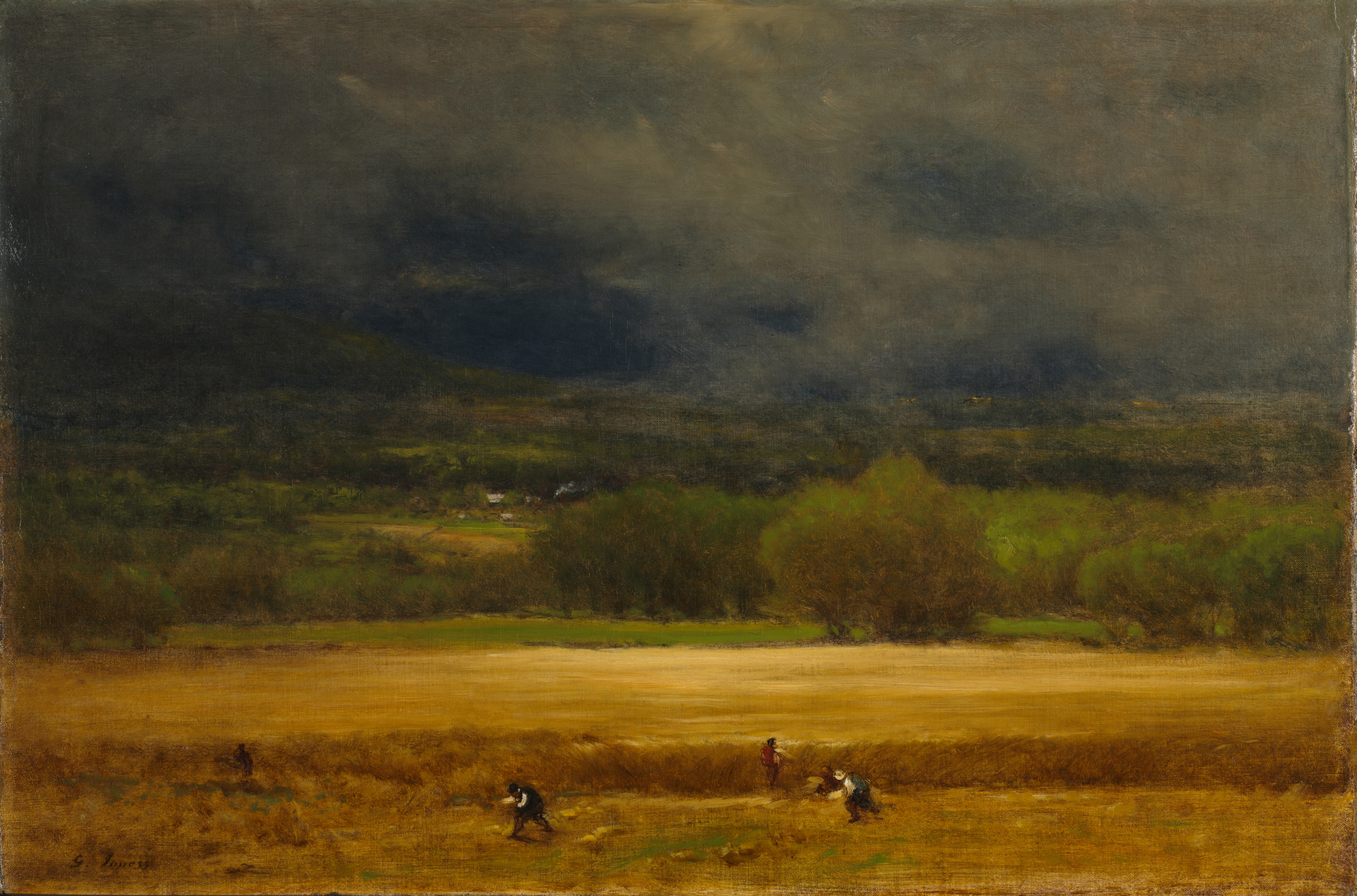The Cleveland Museum of Art
Collection Online as of April 25, 2024

The Wheat Field
c. 1875–77
(American, 1825–1894)
Unframed: 50.8 x 76 cm (20 x 29 15/16 in.)
Location: not on view
Description
Inness began his career executing detailed, realistic landscapes in a style similar to other artists of the Hudson River School. After a series of trips to Europe, as well as growing involvement in Swedenborgianism—the spiritual doctrines of the theologian Emmanuel Swedenborg—Inness created increasingly free, mystical, and expansive paintings. This work was painted following a visit to France and Italy from 1870 to 1874, during what has been considered the most important phase of Inness’s career. Here a group of farmers harvest grain in the foreground, while a storm seems to be brewing in the background. Inness frequently used approaching storms as a sign of God revealing himself in nature. The notion that the natural world was imbued with the spirit of the divine was an important component of Inness’s religious beliefs.- Mrs. J. E. T. Rutter 1899; Mrs. L.W. Rutter, 1918; Mr. and Mrs. Robert S. Copelin
- Green, Tyler. Emerson's Nature and the Artists: Idea As Landscape, Landscape As Idea. Munich: Prestel, 2021. Mentioned and reproduced: P. 90, fig. 35
- Year in Review: 1978. The Cleveland Museum of Art, Cleveland, OH (organizer) (February 13-March 18, 1979).
- {{cite web|title=The Wheat Field|url=false|author=George Inness|year=c. 1875–77|access-date=25 April 2024|publisher=Cleveland Museum of Art}}
Source URL:
https://www.clevelandart.org/art/1978.74